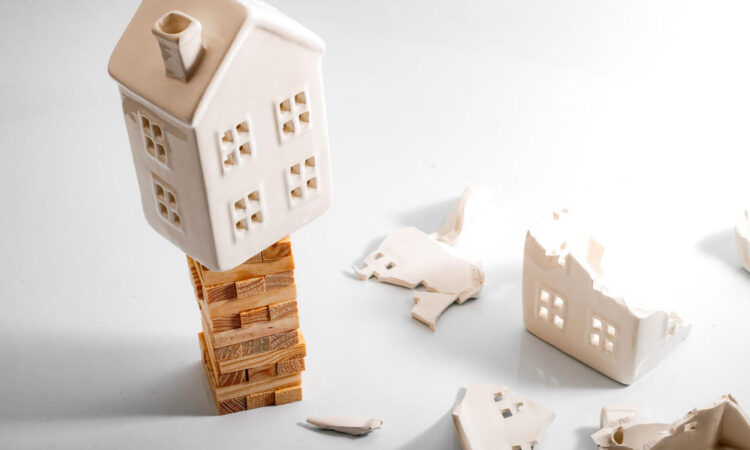

According to recent Redfin data, U.S. home prices were up 6% annually, and the median price of a home sold was $432,812 in April. Despite high mortgage rates, there’s clearly movement in the real estate market: 450,239 homes were sold for the month. Some of those were surely investment properties — but how do you know if a real estate investment is worth the risk?
GOBankingRates spoke to two millionaire real estate investors to learn about the risks they took in building their wealth to the next level.
Learn More: Barbara Corcoran: 3 Cities To Invest In Real Estate Now Before Prices Skyrocket
Try This: Become a Real Estate Investor for Just $1K Using This Bezos-Backed Startup
Wealthy people know the best money secrets. Learn how to copy them.
Purchasing a Distressed Home
“My biggest real estate career risk was dumping a ton of money into a distressed home in a bad neighborhood,” said Saddat Abid, a senior property buyer and CEO of Property Saviour. “It was a huge, old building that needed plenty of work, and lots of people advised us not to go for it.”
Investing in a distressed property — meaning a property that is in foreclosure or about to be — can be a major risk, because if you’re not capable of renovating the home, you could end up losing a decent amount of money. They tend to be in poor condition, so if you purchase a distressed home without a proper home inspection, you could risk dealing with serious expenses in the future.
However, Abid said, “I recognized promise in that area, because there were future infrastructure projects and a gradual change to the community’s demographic. It was a big investment for me to totally rehab the house to its current level of modern while maintaining all of the original character.”
Be Aware: I’m a Real Estate Investor: 10 Places I Would Never Buy Property
Did the Risk Pay Off?
Abid noted that the gamble paid off when the area began gentrifying and property values skyrocketed.
He added, “Few risks for realtors are more fruitful than investing in undervalued properties in emerging neighborhoods. Inexplicably, these areas have not gotten the attention of investors and will be perceived as dubious in the sense that their future development is difficult to ascertain.”
Abid cited careful market analysis for his success, considering factors such as planned infrastructure and population growth. He credits patience combined with a strong strategic mind for spotting opportunities, which can contribute to building wealth in real estate.
Getting Involved in the Short-Term Rental Market
“Another major risk was to get involved with the short-term rental market, which was still in its infancy,” said Abid. “With no certainty of occupancy rates due to the unpredictable and changing nature of industry occupancy, coupled with regulatory theatre, it was always going to be a hard battle.”
While you may hear about Airbnb rental properties fairly frequently in the real estate community, this space was fairly risky and confusing about a decade ago.
Did the Risk Pay Off?
Abid mentioned that he focused on buying the right properties and creating superior guest experiences to stand out in the space. The risk paid off when customers were satisfied with the services and started returning, leading to a steady stream of revenue.
Taking On a Project During the Financial Crisis
“A sizable risk was taking on a massive development project during the depths of the 2008 financial crisis,” said Kenneth Yim, managing partner at Owncondo. “The real estate market had plunged, credit was frozen, and the future seemed bleak.”
Yim and his partners decided to forge ahead with plans for this sizeable project despite the difficulties, hoping the financial issues would eventually improve.
Did the Risk Pay Off?
Yim said, “By the time the economy rebounded a few years later, we emerged as one of the few developments with prime inventory, generating stellar returns. Navigating that turbulence sharpened my skills in crisis management and prudent risk mitigation.”
Sometimes, when trying to build wealth through real estate, you have to be willing to take risks, even when others are hesitant.
Investing In an Up-and-Coming Community
“I invested a considerable sum into an up-and-coming neighborhood undergoing a long-awaited revitalization,” said Yim. “Many colleagues balked at the area’s checkered past, but I was confident in the municipal rejuvenation plans.”
Yim was able to secure financing to invest in an apartment complex at a discount and then oversaw its transformation into luxury lofts tailored for young professionals.
Did the Risk Pay Off?
Yim said, “Despite initial leasing challenges, the units are now 100% occupied at top-tier rents. This experience validated my ability to identify emerging markets ahead of the curve through comprehensive analysis.”
Purchasing a Large Commercial Property
“Several years ago, I had the opportunity to acquire a large commercial property occupied by an anchor tenant with a long-term lease,” noted Yim. “The location was fantastic, but the real prize was the immense potential for redevelopment down the road, when that anchor tenant’s lease expired in seven years.”
Yim knew that this was a major risk, because it required a massive upfront capital investment, and they had to wait many years before any redevelopment could start. One of the biggest hurdles was fighting the temptation to flip the property quickly instead of holding onto it.
Did the Risk Pay Off?
According to Yim, “The risk paid off tremendously — those towers are now multi-million dollar assets, highly coveted by both tenants and investors alike.”
Even though Yim and his partners had to wait for the original lease to expire, they worked closely with city planners to envision and construct this redevelopment project.
More From GOBankingRates
This article originally appeared on GOBankingRates.com: I’m a Real Estate Investor: 5 Biggest Risks I Took To Become a Millionaire
